By Eric Niderost
Hedy Lamarr was the most beautiful actress of her generation, a celluloid diva who was the epitome of Hollywood glamour, sensuality, and sophistication. But there was another side of Lamarr that has only been revealed in recent years. The screen goddess was also a brilliant inventor who devised an early form of spread-spectrum communications to prevent Axis transmitters from jamming Allied radio-controlled torpedoes. The digital version of this concept is employed in all our modern cell phones.
Starting Her Career as an Actress
Hedwig Eva Maria Kiesler was born in Vienna, Austria, on November 9, 1913. Her father, Emil Kiesler, was a prominent banker, and young Hedwig enjoyed all the privileges of the upper classes in the old Austro-Hungarian Empire. Even as a child she showed an intellectual curiosity far beyond her years. Once while examining her father’s watch, she asked, “Why does this in front go around? How does this work?”
The striking young beauty learned all the basics from a series of tutors, then was sent to a succession of private schools. But these schools were meant to add polish, not prepare a woman for a career. As she entered her teen years, her future seemed predictable and hardly different from any other young Viennese society girl.
It was generally expected that she would marry well and spend the rest of her life as the perfect mother and hostess. Hedwig had other ideas. Becoming an actress seemed a good way to both make a living and free herself from the shackles of convention. Luck was with her; she attracted the notice of German director Max Reinhardt, who took her to Berlin for training in the dramatic arts.
After a modest stint as a script girl she began acting in 1930. Her screen debut was a bit part in the German film Geld auf der Strasse (Money on the Street). More films followed, forgettable productions that did little to enhance her reputation or further her career. But then Czech director Gustav Machaty cast her in one of the most controversial movies of all time, Extase (Ecstasy). The 1932 opus was one of the most sexually frank films ever made, though perhaps tame by 21st-century standards.
Ecstasy featured Hedwig as a young woman trapped in a loveless marriage with an older man. At one point the 19-year-old beauty goes for a nude swim, a 10-minute sequence that showcases Lamarr’s naked form. Later, Hedwig’s character meets a young soldier and they soon make love. The camera lingers on Hedwig’s face in tight close up during the encounter.
Married to a Domineering Husband
Lamarr soon discovered that fame is a two-edged sword. Ecstasy cemented her reputation as a screen “goddess” of great beauty and sensuality but made it harder for people to accept the fact that there was real intelligence behind the lovely façade. At the time, though, it seemed that Ecstasy was Lamarr’s farewell to the cinema. Her parents thought it high time for her to marry and take her place among Vienna’s social elite.
Leaving nothing to chance, her parents insisted that she marry Fritz Mandl, the head of Hirtenberger Patronenfabrik, a leading armaments firm. Though it seems incredible in retrospect, the independent-minded beauty did as she was told and married Mandl on August 10, 1933. On the surface, it seemed a fairy tale union. She had social position, money, jewels, and literally dined off gold-plated dishes. The couple lived in a chateau and had an army of servants to cater to their every whim. But the image of fairy tale happiness was more fiction than real.
Mandl was a man who placed profit over morality and was favored by the new crop of right-wing dictatorships that were springing up across Europe like malevolent mushrooms. Hedwig found herself playing hostess to a steady succession of arms dealers, manufacturers, and political figures. Italian dictator Benito Mussolini was a dinner guest, and it was said that Hedwig also met the new German Führer, Adolf Hitler.
Her husband made no secret of his right-wing fascist leanings and was ready and willing to sell to the Germans or anyone else who would pay his price. Mussolini was a regular customer, and it was said the Italian Army was largely equipped with Mandl weapons during its invasion of Ethiopia in 1935.
Hedwig was passionately anti-Nazi but had to keep her feelings hidden beneath her dazzlingly beautiful façade. Mandl was insanely jealous, domineering, and possessive, even ordering servants to spy on his young and beautiful “trophy” wife. The arms manufacturer also made a desperate and unsuccessful attempt to buy up all existing prints of Ecstasy. Mussolini personally owned a copy of the film and politely but firmly refused to sell it to his friend.
Mandl’s possessiveness had a positive side, at least in retrospect. Hedwig was constantly at his side when he attended business or development meetings and kept her eyes and ears open, absorbing much technical data in the process. After four years of marriage, she finally could not take a minute more of what had become a gilded prison. Hedwig drugged the maid who had been assigned to watch her, donned the servant’s uniform, and slipped away to freedom.
Off to America With MGM
Hedwig, now Hedy, found herself in London, where she resumed her acting career and found work on the stage. Though she did not realize it, her timing was perfect and probably saved her life. In 1938, barely a year after her escape, Hitler took over Austria. Austrian Jews were persecuted, and later many died in the Holocaust. Hedy had Jewish blood, and it is highly unlikely that her estranged husband would have done anything to help her.
As luck would have it, Hedy caught the attention of Louis B. Mayer, head of Metro-Goldwyn-Mayer film studios, who was in England at the time. One of Hollywood’s major power brokers, Mayer loved to groom new actors and was always on the lookout for people to add to his stable of stars. The movie mogul had discovered Greta Garbo and Greer Garson while on European trips, and this excursion was no exception. Mayer offered Hedy a $500 a week contract to start but cautioned her that she would have to change her name.
Mayer was a man who passionately espoused what would today be called family values. An odd combination of hardheaded businessman and mushy sentimentalist, Mayer loved to have a good cry at the movies. He loved preachy, saccharine films, especially those that involved children, idealized teens (Andy Hardy), or cute animals (Lassie). This was, of course, light years away from Hedy’s steamy, continental brand of sensuality—but in this case, Mayer the businessman overcame Mayer the guardian of American morality.
Hedy accepted Mayer’s offer and boarded the French liner Normandie to begin her new career as an American movie star. During the voyage MGM publicist Howard Strickland handed Hedy a list of possible last names to choose from. Hedy picked Lamarr, the surname of an MGM star who had died of drug abuse in the 1920s.
The newly christened Hedy Lamarr arrived in Hollywood at the peak of its Golden Age. Movie attendance was at an all-time high. In 1939, 50 million Americans went to the movies at least once a week. Adding occasional moviegoers to these totals, weekly attendance figures were boosted to some 80 million people. When one considers that the population of the United States was around 130 million, the impact of the movies becomes readily apparent.
Hedy’s first American film was Algiers, released in 1938 and co-starring French actor Charles Boyer. Boyer is Pepe Le Moko, underworld king of the exotic native quarter known as the Casbah. Lamarr is Gaby, a sultry Parisienne who reminds him of home. Boyer complained that Lamarr could not act, but most of the problem came from the fact she simply did not know English well. She had to learn her lines phonetically, but she quickly mastered the new language.
Algiers was a hit, leading to other starring roles. She was a beautiful cypher at first, but as time went on she matured into a good, if not great, actress. MGM tended to cast Lamarr as an exotic temptress, fiery wanton, or “other woman.” In White Cargo (1942) she was memorable as Tondelayo, slinky native girl, and in Boom Town (1940) she was Clark gable’s mistress.
Hedy Lamarr’s Epiphany
By 1940, she was an established member of the Hollywood community. War had broken out in Europe, and it was clear to Hedy that it would only be a matter of time before the United States would become involved. She was not a citizen yet (she became one in 1953), but she wanted to do something for her adopted country. Lamarr remembered how she had accompanied Mandl to screenings of torpedo field tests in the mid-1930s. Far from boring her, such technical exercises actually stimulated her to think about torpedoes and the delivery of warheads to a target.
In spite of very real successes in World War I, submarine warfare was still an infant science in the 1920s and 1930s. Submarines could only stay submerged for a comparatively short time. There were problems with weaponry as well. Once a torpedo was launched, its direction could not be altered or adjusted. There was no guarantee a torpedo would hit its intended target; currents could alter its course, or a ship might take evasive maneuvers. Radio control was one possible answer. If a torpedo was remote controlled by radio, there was a much better chance of achieving its objective.
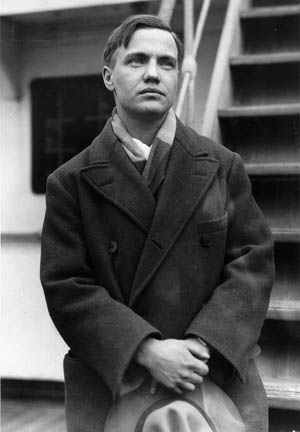
But there was a complication. If the enemy detected the frequency of the torpedo signal, the transmission could be jammed or blocked. Without radio guidance, a new torpedo would be just as “blind” as the old. This was the problem that Hedy decided to tackle.
It began in 1940, when Hedy Lamarr attended a dinner party at the Hollywood mansion of actress Janet Gaynor. During the course of the evening she started to chat with George Antheil, a film score composer. Lamarr did not suffer fools gladly, and she was drawn to Antheil’s obvious intellect. Here was a kindred spirit so different from the shallow Hollywood types she was used to dealing with. At one point they were sitting at a piano, Antheil pounding away and Hedy playfully following his notes.
Then, in a flash of brilliance an essential truth suddenly came to her. Even though Antheil was hitting different keys, she could hear them and respond in kind. Each pressed key had a different sound—in a sense, a different tonal frequency—yet Hedy was receiving the message with crystal clarity. Wanting to pursue the matter further, Hedy told the composer to give her a call. She quickly scribbled her phone number in lipstick on his car windshield, a number many male fans would have loved to receive.
Antheil called the next day and was invited for dinner in her Benedict Canyon home. Lamarr got a note pad and started jotting down her ideas in rapid fashion. A torpedo guided by only one radio frequency could be easily jammed. But what about 10 frequencies? How about 40 or 50 frequencies? What then?
In Hedy’s concept a signal would be broadcast to a launched torpedo over scores of frequencies, the transmission jumping from frequency to frequency seemingly at random and at split-second intervals. The effect would be like spinning a radio dial; by the time the enemy honed in on one frequency, the signal would have already moved on to several others. Frequencies would be changing at such a mind-numbing pace they would be next to impossible to pin down.
Building a Machine for the Theory
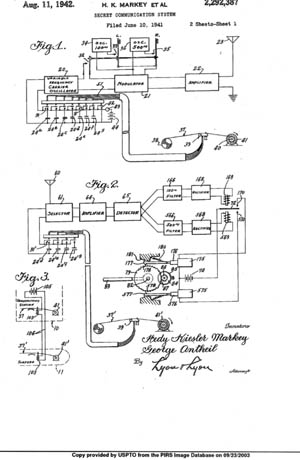
It sounded good on paper. But what mechanism could be placed inside a torpedo that would keep it in sync with the radio transmitter’s frequent changing commands? Antheil was known as an avant-garde composer who was famous—or notorious—for his musical innovations. In 1926, his “Ballet Mechanique” was so powerful it blew away the audience, almost literally. He managed to synchronize no less than 16 player pianos, four xylophones, four bass drums, a siren, and two airplane propellers. It was the latter, when revved up to full power, that almost knocked the audience out of their seats.
Antheil took a leaf from his own book and suggested perforated paper rolls, not unlike those in player pianos, to synchronize the various jumps in frequency. The slotted holes in each transmission roll would parallel those of the roll placed in the torpedo, a carbon copy that would ensure both transmitter and torpedo receiver would be exactly on the same page at all times as a steady stream of frequencies was quickly changed. It is no coincidence that the invention called for 88 frequency changes, the exact number of keys on a piano.
Antheil and Lamarr called their invention “Secret Communications System” and began drawing up detailed descriptions and diagrams. In December 1940, they formally submitted their plan to the National Inventor’s Council, a government clearing house of ideas sent in by the general public. Though some council members were lukewarm, the invention had enough merit to warrant further exploration. Some of the bugs were worked out, and the concept further refined.
On August 11, 1942, a patent for the Secret Communications System was jointly granted to Lamarr and Antheil. Formally titled Patent No. 2,292,387, the document is signed under Lamarr’s legal married name at the time, Hedy Kiesler Markey. Unfortunately, the U.S. Navy rejected the idea, claiming the perforated roll concept was clumsy and unworkable. It might well have worked, but the Navy simply was not interested and shelved the concept.
The Legacy of Lamarr’s Frequency-Hopping System
Lamarr accepted the Navy’s verdict and began helping the war effort in more traditional ways. She sold war bonds and auctioned off kisses for the cause. In one memorable rally, she is said to have sold no less than $7 million in war bonds. She remained a popular actress and continued her career after the war. Perhaps her most memorable postwar part was in the Cecil B. DeMille biblical epic Samson and Delilah. As Delilah, she was once more the raven-haired temptress, only this time her feminine wiles were photographed in splashy Technicolor.
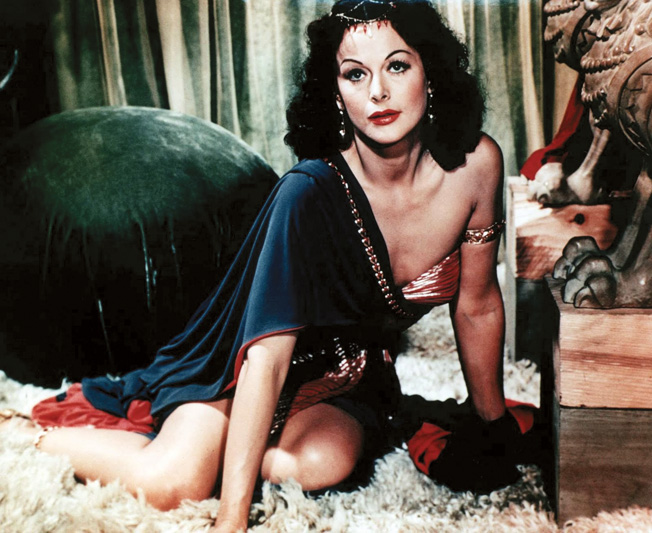
The 1950s saw many changes in the film industry, including increased competition from television. She remained beautiful as ever, but the “exotic” type of persona was less popular in the Eisenhower era. Her last major film of note was The Female Animal (1957). That same year engineers at the Sylvania Electronics Systems Division in Buffalo, New York, developed a frequency-hopping system that replaced piano rolls with transistors. Two years later, the Lamarr-Antheil patent expired.
In 1962, the transistorized frequency-hopping system was placed aboard the U.S. Navy ships that were blockading Cuba during the Cuban Missile Crisis. As technology evolved, Hedy’s frequency-hopping concept, now called spread spectrum technology, changed with it. With the digital revolution of the 1990s, Hedy’s idea became the basis of wireless Internet transmission and cellular phones.
Today, frequency hopping is also widely used in GPS mapping and in Wi-Fi systems throughout the world. Like many stars of Hollywood’s golden age of the 1940s, Hedy Lamarr’s star slowly began to fade by the 1960s. She also largely lost her looks, partly because of botched plastic surgery. Her beauty mostly gone, Lamarr became a semi-recluse.
On March 12, 1997, she was finally honored with an award for her contributions to frequency-hopping technology. The award was given by the Electronic Frontier Foundation in recognition for her contributions to science. Hedy Lamarr died on January 19, 2000, at her home in Florida. She was 86.
Hedy did not receive a penny for her invention, much less a government thank-you for her efforts. The actress graciously accepted the tardy accolades, but when pressed by a reporter admitted, “It’s about time!”
NOTE: A limited TV series based on Hedy Lemarr’s life, staring Gal Gadot (“Wonder Woman”), is being developed by Apple TV. No air date had been set at the time of this post.


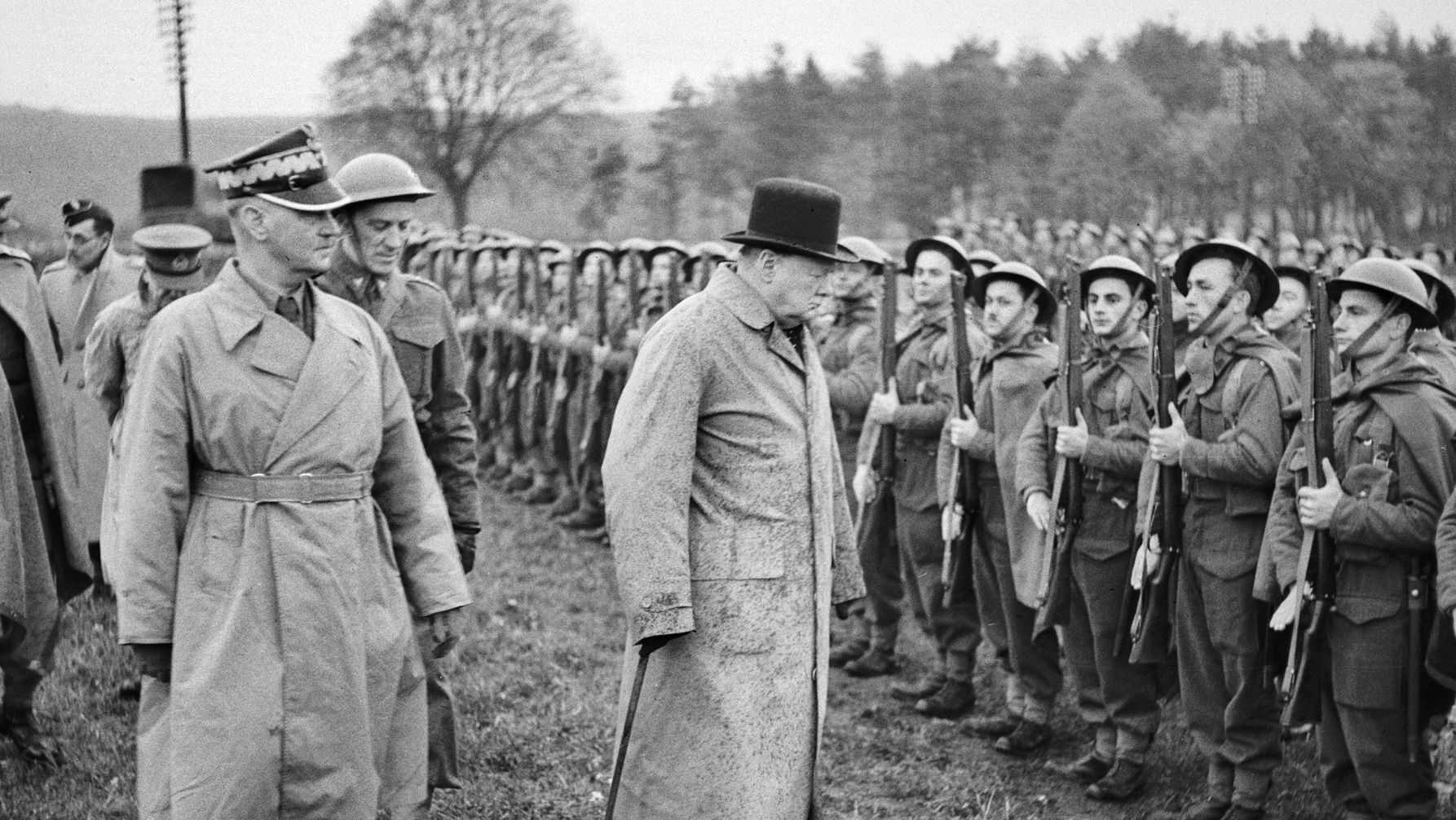
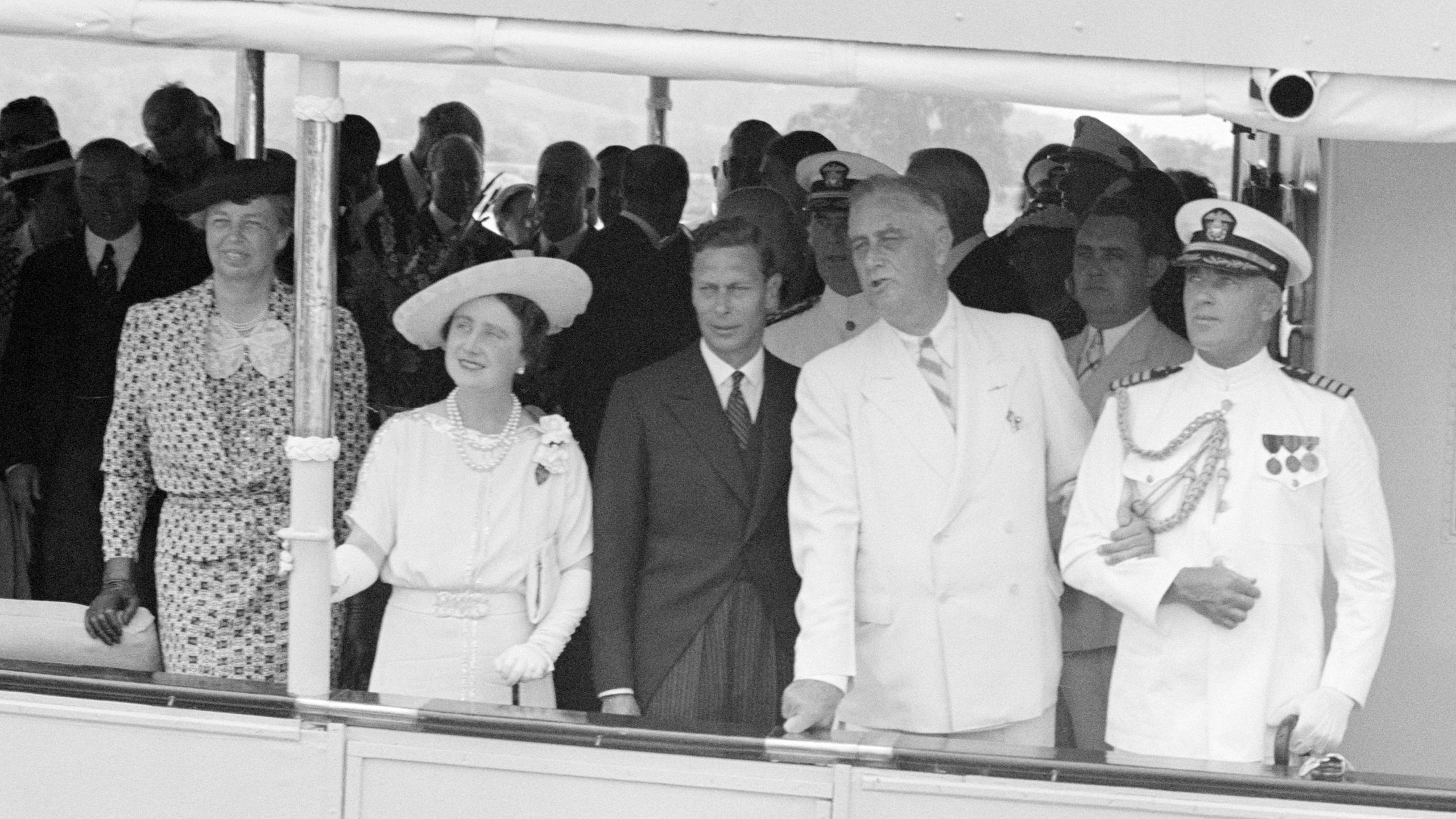



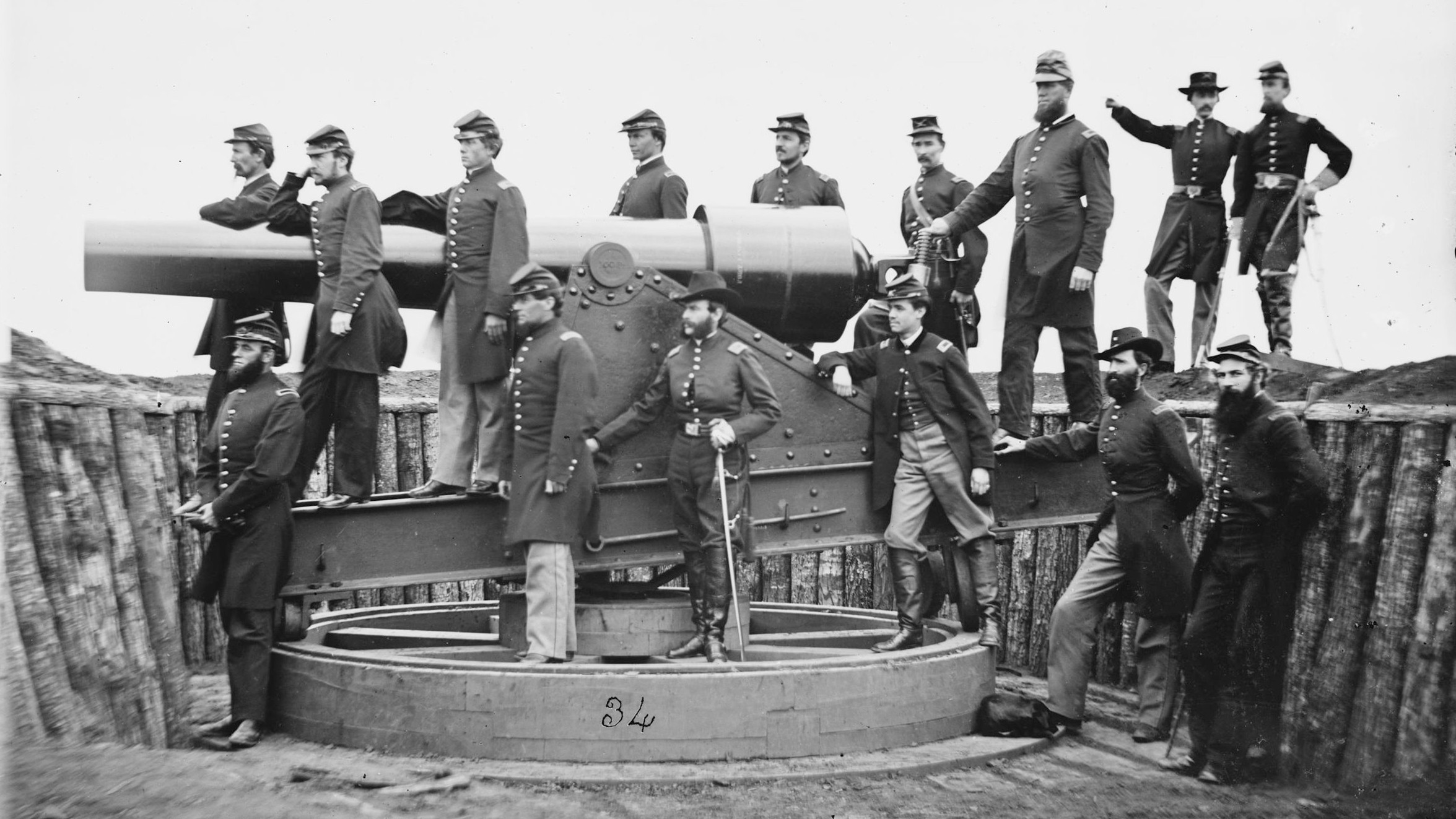
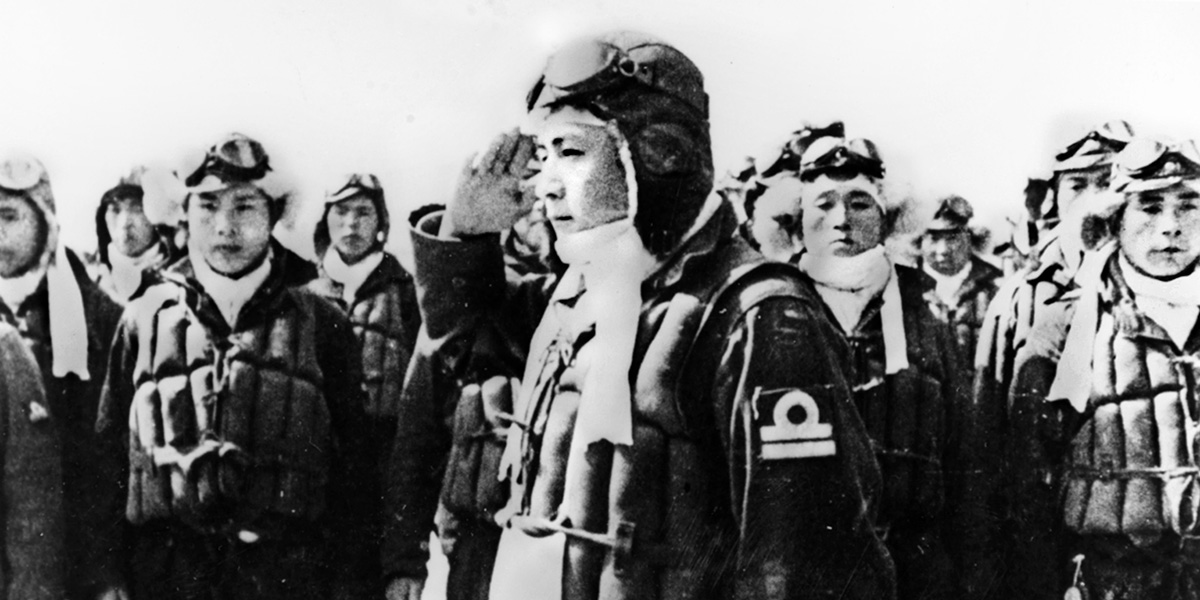
Quite a lady. She deserved better.